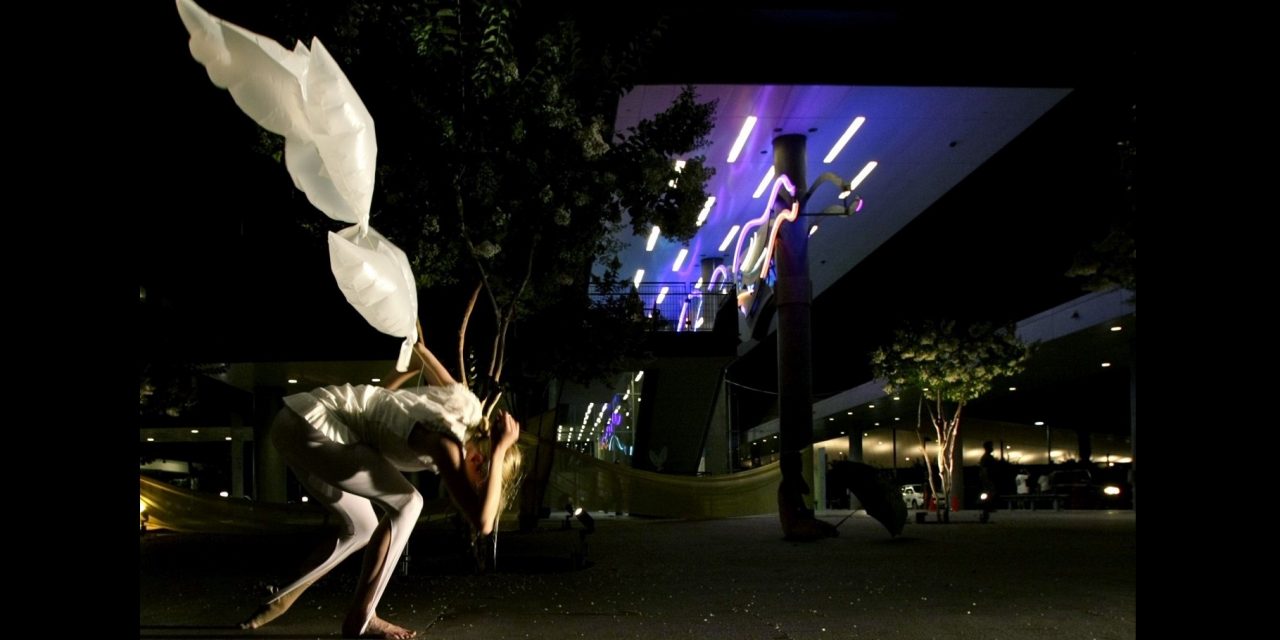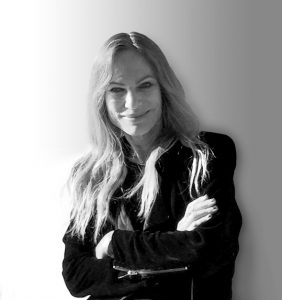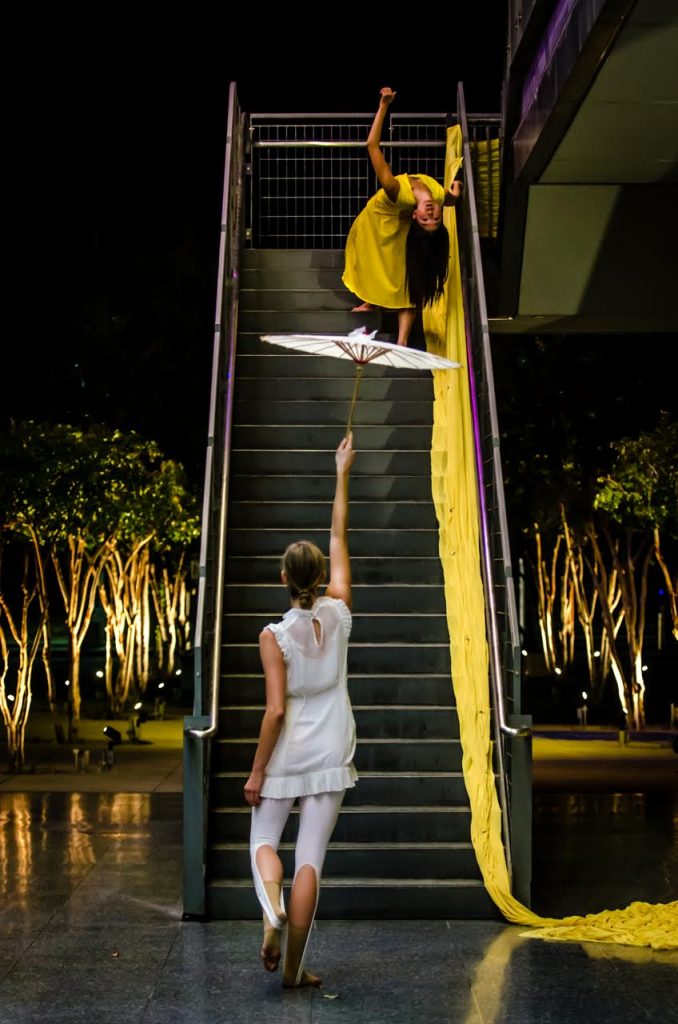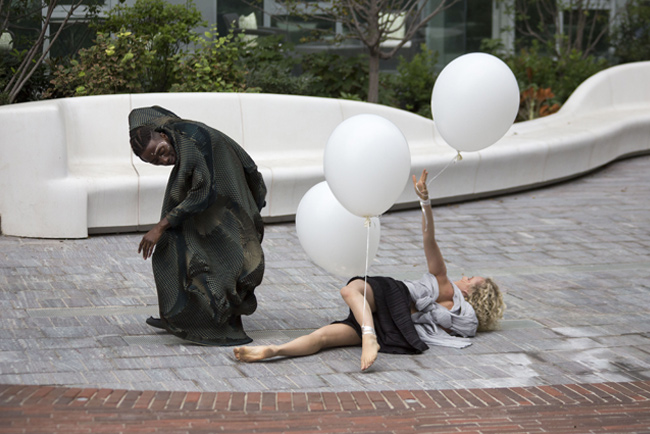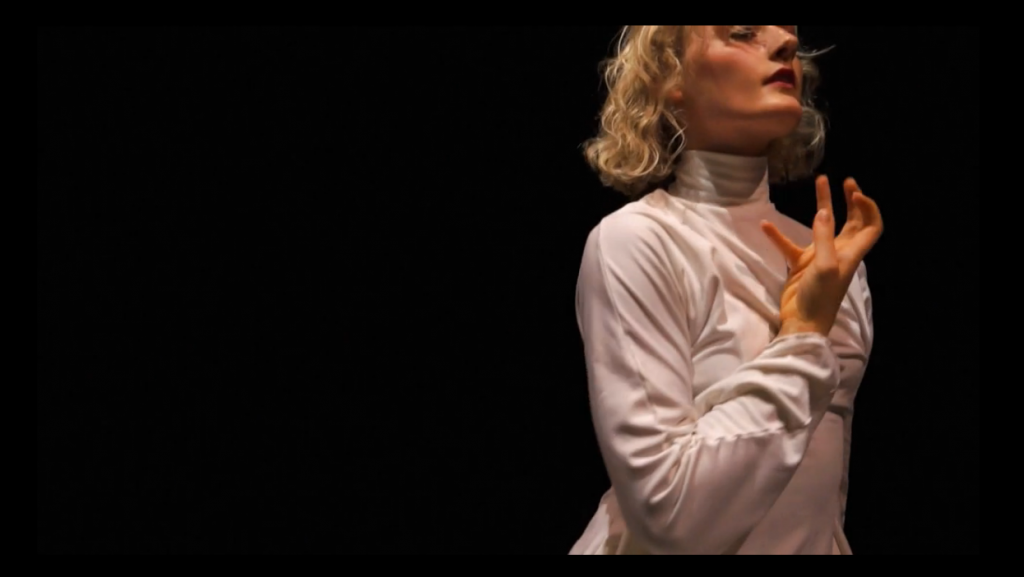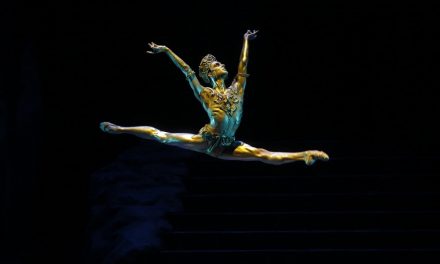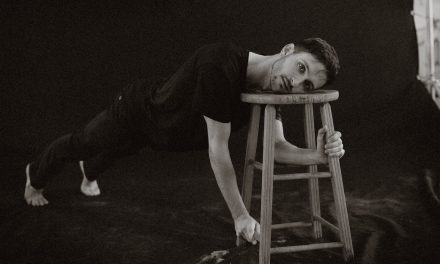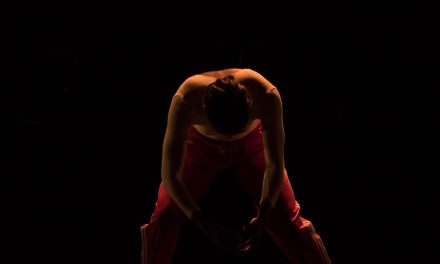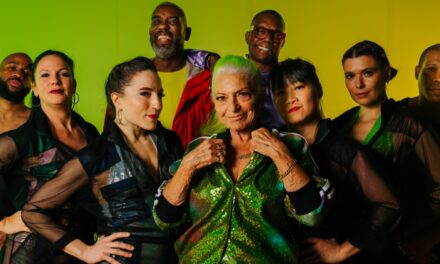I drove up to interview Sarah Elgart at her home, a beautiful white stone structure that stairsteps up a mountain side in Topanga Canyon, which she shares with her artist husband Stephen Glassman and their very friendly dog Romi. She explained that the house has had several transformations. Originally built in the 1920’s as a church, it has been a hunting lodge and a home for unwed mothers, Elgart’s favored part of its history.
Sarah Elgart is a gorgeous woman, with intelligent green eyes and long blond hair that frames her heart shaped face. We have known each other for many years but realized that this was the first time we had sat down to chat for any length of time. When I asked her how long we had known one another, Elgart laughed and said, “I have no idea. You have always been there!”
Sarah Elgart is an award-winning Choreographer/Director who has been one of Los Angeles’ leading dance artists. Her talents are wide ranging. She is a wonderful choreographer, a director of dance on film and a writer. She was the Artistic Director and Choreographer for Sarah Elgart & Company from 1979 to 1990 and from 1990 to 1996, she was the Artistic Director and Founder of MADRES (Mothers and Daughters Reaching Empowered States), a group that consisted of homeless women who were in transition. In 2009, Elgart founded Sarah Elgart/Arrogant Elbow focusing primarily on large scale sight specific productions and film dance. Over the years, Elgart has also worked in film, commercials, and television, working with noted directors including JJ Abrams, Catherine Hardwicke, Fredrik Bond, David Lynch and others.
Elgart is about to launch a 3-day, 8 hours a day Screen Dance Intensive designed for dancers, choreographers and directors at the Electric Lodge in Venice, CA. from April 6 to 8. The Screen Dance Intensive will provide “an in-depth introduction to and hands on experience of creating compelling movement content for camera.” There will be screenings of films, discussions, creating, filming, and editing material. Those participating will be exposed to the international genre of Screen Dance and have a chance to broaden their own visual style.
Some of what will transpire during the 3-day intensive will be an introduction to the international genre of Screen Dance that includes the commercial to the creative. The participant will leave with professionally shot footage of their work for use on creative & promotional platforms. They will receive an introduction to capturing dance on film, including coverage, editing, lighting and more. There will be discussions on creating choreography for the camera, about what works or does not work. The participants will learn how to navigate and the basic terminology for working on a film set; a lexicon that Elgart calls “Setiquette”. And, they will take part in the creation of an original Screen Dance work and have seminars with special guests from the worlds of dance and film.
Elgart became interested in dance for film long before it became popular. Back in the late 1980s she was working with inmates at the California Institution for Women (CIW) and the Long Beach Museum of Art approached Elgart about coming to CIW to film a rehearsal of the work that she had created for the inmates. The museum later filmed Sarah Elgart & Company. “I became fascinated with the process of editing and seeing what could be done with altering time and how you could affect the flow of a dance with editing.” She said that it was like being Alice in Wonderland in the editing room. It was during this time that she fell in love with film. She said that her husband, Stephen, had recently reminded her that she told him, “You came back and said ‘This is it. This is the future for dance and film’”.
Elgart is the daughter of two painters who, prior to her being born, spent time in Paris. “When I was growing up I would be exposed to all these incredible films by all these amazing European film makers like Jean Cocteau, Federico Fellini and Vittorio De Sica. I was a kid and a lot of those images have stayed with me and have informed a lot of what I do now choreographically.” She believes that she works very visually because of being around that process with her parents as painters.
For two years in a row Elgart was one of four international accepted choreographers chosen to attend the Dance Film Lab at Sundance. There she worked with film directors and choreographers like Stanley Donen and Michael Kidd. They were given a studio, edit bays and their own crew. She could bring two of her own dancers as well as a chance to work with the company that had been installed for the workshop. “You had everything you needed, and I began to experiment with dance in film then. So, it’s a long, long gestation”.
After working with the LBMA, Elgart worked for several years with Disney in Orlando. She recognized the scope and the impact that film could have on people. During her time at Disney, she spent 6 to 8 months in Orlando and then returned to LA for the rest of the year. In one of those times back in LA, she took a job teaching dance in a local high school. She would bring arms full of video tapes of dances that she had choreographed. When her students saw the title of a dance that they had learned a few weeks before on the tape, for example, The Knowledge by Janet Jackson, they would start dancing that piece in front of her. “I realized then that if dance on film could do that, how fabulous!” Elgart said.
When asked if she choreographed and then filmed, or choreographed especially for the camera, her answer was, of course, both. Back in the mid-1980s Elgart worked with music videos and films. There was one director whom she worked with on 25 to 30 videos, and with whom she had a special collaborative relationship. “He would wait for me before editing.” She explained. “Even if the dance was a very small part, he wanted me there for my input.” Together, they were both learning. She about film editing and him about choreographing.
Elgart talked about how dance and music are both ephemeral, but unlike music, before one could not record dance on a CD and take it home. “On a very fundamental level,” She said. “what fascinated me about film and dance, and the relationship between the two, is that until dance had begun to have a relationship with the film media and all its aspects, you couldn’t do that.” We both agreed that it was very different watching dance live than it is on film, nor can you compare them. Elgart does not claim that one replaces the other, but they are simply different, with each having its great importance.
Elgart has always seen the potential of having the experience of dance put on film but being involved with music videos, films, and commercials has not always brought her approval or praise from the dance community and critics. During the 1980s and 1090s, Elgart said that she was ostracized for her involvement in film. “It was suggested that I shouldn’t have been so successful. That by doing this work I wasn’t a pure artist.”
Dance in film has, of course, been around for a very long time. One such artist was a Ukrainian-born American filmmaker named Maya Deren, one of the most important American experimental filmmakers and entrepreneurial promoters of the avant-garde in the 1940s and 1950s. Robert Rauschenberg, Jasper Johns, and Merce Cunningham collaborated with one another to put dance on film as documentation. In 1998, Matthew Diamond directed a film about Paul Taylor titled Dancemaker. Michell Rose and Charles Atlas are two more recent artists who push the boundaries of the artform screen dance. Atlas recently collaborated with choreographers Rashaun Mitchell and Silas Riener to combining live dance with 3-D video. Their piece, Tesseract, was seen recently in LA at REDCAT. With the coming of social media, the world has become a lot smaller but the potential of dance on film has only grown. “To be able to harness it, is a very valuable tool to have.” She said.
As a writer, Elgart is interested in crafting words and finding ways to articulate thoughts and emotions. She stated that there comes a time, however, when words fail us and that it is then that dance steps in. “On a deep level, the way that dance has the ability to communicate beyond words.” She said. “To be able to capture a really beautiful experience with dance on film and take it home with you and refer back to it is amazing and important.”
Finally, the tide as shifted for Elgart. In 1991, Elgart was accepted into the Directing Workshop for Women (DWW) at the American Film Institute and became a DWW Fellow. She worked for years in various capacities with Dance Camera West. There she was involved in the production of the AFI and LA premiere of Wim Wender’s Academy Award Nominated film Pina, and it was Elgart and dance agent Julie McDonald who first help introduce live site-specific dance to the organization’s annual film festival. She had become Board Chair and Director of Artistic Development for Dance Camera West but left that position in 2013.
In 2009, Elgart produced a short film by award winning director Rodrigo Garcia entitled Put it in a Book, and in 2011 she directed an Emmy nominated PSA for Legal Aid Foundation of Los Angeles. In addition to choreographing and directing for her company Sarah Elgart/Arrogant Elbow, she currently writes a bi-weekly column called ScreenDance Diaries about the intersections of dance and film for the on-line magazine Cultural Weekly, where Elgart also launched and produces an international on-line, dance film festival, Dare to Dance in Public Film Festival that is now in its second year. “I think of what I am doing and what I have been doing for four years for Cultural Weekly as a public service.”
In the past, Elgart has been hired by Relativity Media and Axis Connect, and other schools to lead activities like the Screen Dance Intensive, but this is the first time that she has created the workshop on her own and that she will have a total of 24 hours with the participants. Before she would only have a total of between 5 to 7 hours with people in classes that met two days a week for an hour and a half. Elgart said that she enjoys teaching and has a lot to draw from as someone who has worked so thoroughly with dance on film. She has been on set for years as a choreographer and learned film “Setiquette” from scratch, but instead of waiting for someone else to hire her, Elgart has created this opportunity on her own to teach in an intensive situation on her own. Elgart chose the Electric Lodge in Santa Monica because she has had a working relationship with it for many years. She knows that space well.
The critics are finally singing her praises as a choreographer, director and film dance artist. Elgart would not call herself a pioneer in the field of dance film, but there were not many working in her field when she began, and so, that is how I think of her. To me she is one of the unsung heroes of contemporary dance in Los Angeles.
The Screen Dance Intensive will run for three days, eight hours a day April 6, 7 & 8, 10am to 6pm. For more information about the Screen Dance Intensive, email: sarahelgart@mac.com. To learn more about Sarah Elgart, her choreography and her many dance films, click here.
Feature Photo: Sarah Elgart/Arrogant Elbow – Photo by Moses Hacmon
To visit the LA Dance Chronicle Calendar of Performances, click here.

